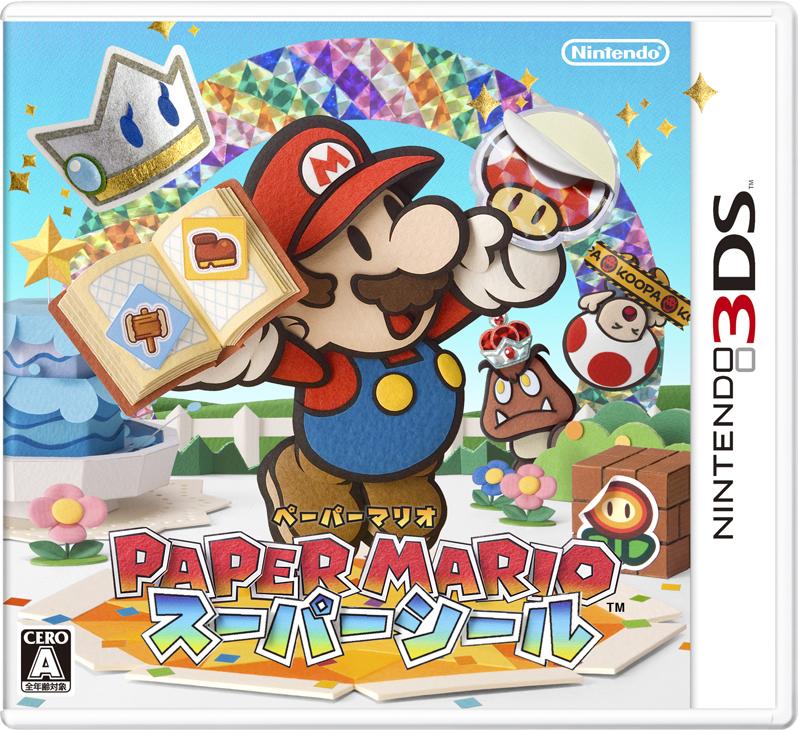

Mario eventually comes to the game's hub world, which is more or less a giant spaceship equipped with several rooms, all of them doorways to different galaxies. To quote Nintendo president Satoru Iwata, you will say wow. The production values powering this latest platformer are exceptionally high. All of these visual effects are complemented by some truly outstanding art and choreography. As Mario dodges oncoming fireballs, the landscape deforms before him, particles explode in every direction, a nearby lake reflects and refracts light, smoke billows from ruined houses, and lighting effects illuminate the foreground. In fact, from the start, Galaxy is the first title that really shows off what Wii can do. In direct contrast to Sunshine, whose opening cinematic actually featured a sleep-inducing pre-rendered Mario idle animation, of all things, the intro sequence in Galaxy uses the game engine alone and it's far more dazzling. Before Mario can rescue the princess, her castle is literally ripped from the ground - she still in it - and whisked away into outer space the Italian plumber sent falling back toward the atmosphere. The Toads are all celebrating a great festival when long-time nemesis Bowser and his fleet appear in the sky above and wage war on the landscape. The title begins with a predictable, but thankfully brief storybook introduction and jumps you immediately into a gorgeous re-imagining of the Mushroom Kingdom at night. (If you haven't yet played it, please reconsider because it's both innovative and pretty.) The developer's attention to detail is well represented by Galaxy. Mario's new platformer romp was created by Nintendo's EAD Tokyo studio, whose first project was DK Jungle Beat, a critically acclaimed flop. It is a marriage of old and new - a theme that extends beyond presentation and into the gameplay mechanics - but we'll get to that. You will see recognizable characters, levels, upgrades and challenges, yes, but you will also jump, swing, glide, and fly your way through an overwhelming amount of completely new scenarios and objectives. Although Mario does indeed soar over planets and floats between stars, he also visits locales seemingly ripped directly from previous outings. Save for more traditional (and rare) bonus stages, the majority of levels in the GCN game featured an island motif and many of the places and faces from the Mushroom Kingdom were nowhere to be found. In Sunshine, Mario journeyed to Isle Delfino and met up with the very lame Pianta, big-nosed characters whose heads sprouted trees (don't ask because we don't know). Take, for example, the setting and characters. It's not just some gimmicky marketing term designed to boost sales - Galaxy really does feel like the "spiritual sequel' to Mario 64. But when you really compare and contrast the three games, you quickly discover that Galaxy and not Sunshine has more in common with the Nintendo 64 classic. Both Sunshine and Mario 64 before it took place on land and water and not within the depths of space. Galaxy would seem to be the odd duck of Nintendo's 3D Mario trilogy. Just as these classics were the pinnacles of 2D platforming in their respective eras, so is Mario's trek through space and beyond the pinnacle of three-dimensional run-and-jump gameplay. Well, if that's the case, let us humbly submit Super Mario Galaxy as Wii's very own version of Super Mario Bros.

and Sunshine to Super Mario Bros 2, a sequel that, while very good, wasn't everything it could've been. Some gamers compared Mario 64 to the original Super Mario Bros. And yet, as a follow-up to Mario 64, which simultaneously brought Mario to the third dimension and revolutionized the genre, it felt anticlimactic. In fact, as far as platformers go, it was unequaled on GameCube. The funny thing is, for its few flaws - a sometimes-troublesome camera and unpredictable framerate, not to mention some of the worst secondary character designs we've seen - Sunshine was still a remarkable game. 3, Super Mario 64 and Super Mario Sunshine - the latter of which was met by mixed critical reaction. The iconic mascot's long resume features some of the greatest platformers to ever grace any home console or handheld, including hits like Super Mario Bros., Super Mario Bros. Mario may be short, but he's not short on starring roles in cherished Nintendo videogames.


 0 kommentar(er)
0 kommentar(er)
